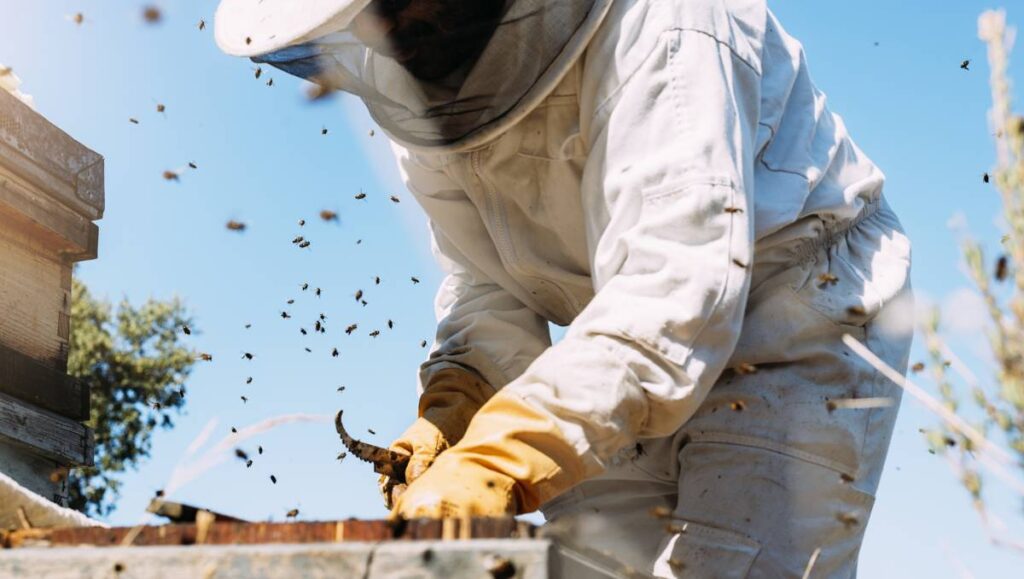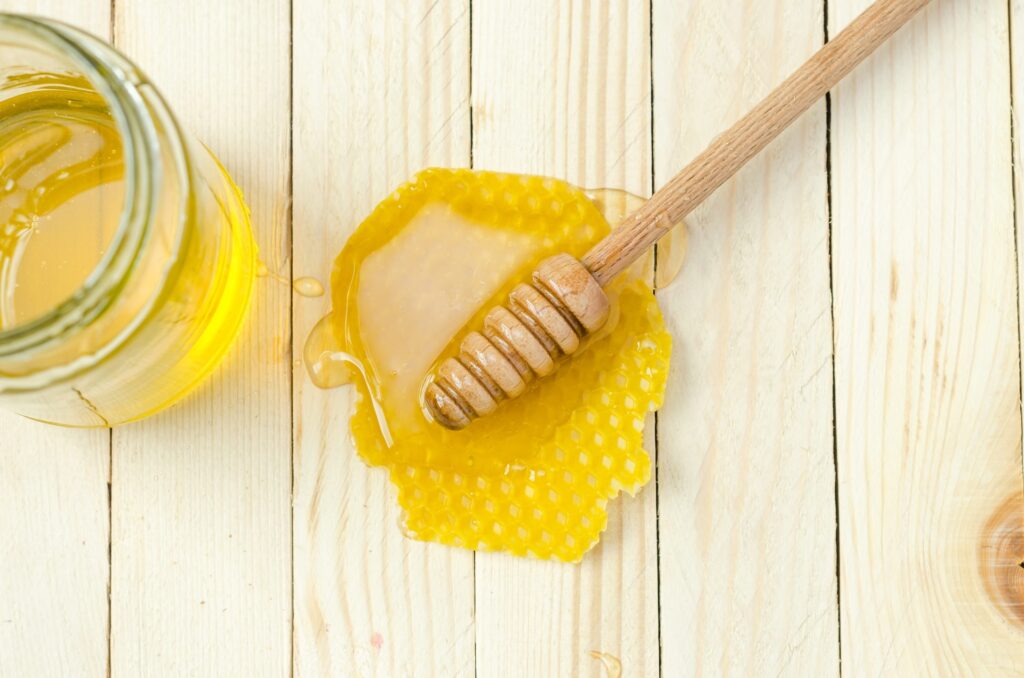If you want ideas to kick-start your beekeeping venture then check out our article.
Beekeeping was legalized in New York back in 2010. Its popularity has been growing ever since. It is hard to imagine that there are so many bee-clubs and beekeeping green ventures in a hustling and bustling city like New York.
You would be surprised to know that there are plenty of bee-focused non- profit organizations and pollinator gardens available in New York. Even hyperlocal honey is readily available at the green markets. The beekeeping frenzy increased even more during the pandemic. People were forced to stay indoors and taking care of bees made them feel a little closer to nature.
In 2024, there were about 300 registered hives in New York, but it is estimated that most of the hives are not even registered and the real number can be over 700.
How to Make Money from Beekeeping?
The only products you will be selling are honey and other bee-related things. You can also rent your bees to commercial crops for pollination and make money off of it.
Your profit will depend on the type of product you will sell, the number of colonies you have, your location, the weather, and the demand. If everything goes according to plan and you can own 700-800 colonies, you make an annual return of about $85,000-$90,000.
If you want to join New York’s bee frenzy and start your own beekeeping venture, there are some things you need to consider.
1. Create a Business Plan

Source: unsplash.com
Every successful entrepreneur starts with a good business plan. It helps you focus and map out the specifics. For starters, you need to calculate your budget and list your expenses.
If you are planning to go big, you will need to purchase or rent land for your bee houses. The land has to be big enough to keep your bees and forage. If you have a big piece of land, you can plan on expanding your business in the future.
After the land, you will have to purchase the particulars. Bees with queens, veils, hive tools, completely constructed hives, and other items are included. To get the most out of these beekeeping products in New York, visit this website.
The annual running costs per-hive can range from $80-$100. However, if you properly take care of those hives, they can last up to 30 years or more.
2. Identify Your Target Market and Price
You will have two types of customers. One will buy honey and another will buy bee-related products. It will take some time till business kicks off. You have to create a name for yourself in the community and make individual sales.
The more people know about you, the more you will be able to sell. Try to get acquainted with organic stores, healthy food stores and restaurants to sell your products in bulk.
Depending on your location and product quality, your price will vary. On average 1.5 lb of raw honey is sold for $10-$12 and 3 lb would go for $20-$22. You can also sell your bee pollen for $10 per 10 ounces.
3. Understand State Regulations

Source: unsplash.com
You have to know all the regulations of New York related to beekeeping. For instance, in New York, every beekeeper has to notify the city and the state about how many hives they own. They have to get a form of approval and provide all the required information.
You also have to keep your bees in a way so that they do not pose any danger to your neighbor. The bees also have to be kept in a healthy environment. Lastly, you have to follow New York’s apiary code of conduct as well. It’s best to get these things sorted out as soon as possible.
4. Talk to Your Neighbors and Join Local Clubs
You do not necessarily have to tell your neighbors what you plan to do with beekeeping. Bees are docile and friendly in nature, but most people worry about the stings, so it is best to notify your neighbors in advance.
If your hives are in a crowded neighborhood, it is best to conduct hive inspections after notifying your neighbors. You can continue your inspection when they are not around. Talk to your neighbors beforehand so you can fix a schedule. Even the children and pets should be kept inside during hive inspections.
Having a friendly relation with your neighbors is also good for the business. If you have beekeeping clubs in your neighborhood, join them immediately. Gain more real time knowledge from experienced beekeepers, and you may even get some free beekeeping resources.
5. Use the Right Equipment

Source: theland.com.au
A starter beekeeping kit is perfect for beginners. You can purchase better and more expensive equipment later on. It’s important to start with the basics, and a starter kit can last for years if maintained properly. The basic kit will have the equipment:
- Hive tools
- Frames and foundations
- Smoker
- Beehive components
- Hive stand and body
- Feeders
- Honey supers
- Inner and outer covers
- Queen excluder
- Mesh helmet
- Leather gloves
- Boots
- Zipper veil made out of cotton or poly
6. Choose a Honey Bee and an Apiary Site
Before choosing an apiary site, you have to know about the flowers needed for the hive. The flowers should be in close range within a one-mile radius.
If it’s too far away it will affect the production, quality and flavor of the honey. You must have fresh water sources within a quarter mile radius. The water does not have to be from a lake, you can always use a large bowl or tub to contain fresh water. Lastly, you will need plenty of sunshine to help other bees find the queen easily.
You have to ensure there’s solid fencing placed between your property line and the hives to keep the hives safe from intruders, animals, or people in general. Make sure you don’t breed more than four hives in a quarter acre parcel.
Once you have found your perfect apiary, you need to get a hold of the right type of bee. Bees are unique, and different bees offer different benefits. For instance, some Italian bees can produce more nectar, Caucasian bees are usually more docile and dark Carniolan bees are more resilient against climate conditions. Focus on the productivity rate, climate condition, behavior pattern, and disease tolerance when choosing the right bee.
7. Properly Harvest Your Honey

Source: unsplash.com
If you can maintain a healthy colony, you should get around 50 to 80 lbs of honey before the winter. Even more honey can be extracted from honey supers. You can leave the honey in the brood boxes as food for the bees during winter. During the summer, leave at least 50 lbs of honey in each brood box. Feed your bees supplements and a 2/1 ratio of sugar to water. Healthy bees will provide more honey for a better harvest.
Final Thoughts
New York offers lots of support and opportunities for beekeeping. You can turn your hobby into a profitable venture if you are focused and determined enough.























